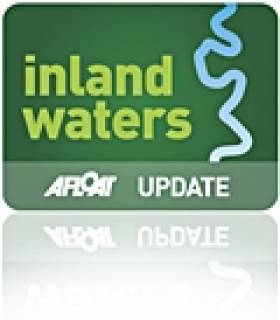Displaying items by tag: heritage
Ambitious Project Floated for Dun Laoghaire Harbour
Top British architects have won the commission to develop an ambitious master plan for Dun Laoghaire Harbour.
The Dun Laoghaire Gazette reports that Metropolitan Workshop have been tasked examining the feasibility of redeveloping the port to attract cruise liners carrying 100,000 passengers annually.
The plan, to be completed by the summer, is aimed at realising Dun Laoghaire's potential "as a major marine, leisure and tourism destination".
Improved public spaces linking the town and the harbour, tourism opportunities and new cultural attractions are just some of the proposals that the plan will take into consideration.
Jonny McKenna of Metropolitan Workshop old the Gazette: "Our approach is anchored in Dun Laoghaire's history and heritage. Our aim is to broaden the appeal of the harbour, both locally and internationally, as a world-class waterfront destination."
The consultation and drafting phase of the master plan will be completed by the end of this month.
Celebrating the Three Sisters Navigation
This year we celebrate the 220th anniversary of the opening of the Barrow Navigation. This linked the Grand Canal with the rivers Barrow, Nore and Suir, and opened up a large area of the hinterland to the great ports of Dublin and Waterford. When the canals closed to commercial traffic in the 1960s it was feared that all use of the navigation would soon cease. Indeed, non-commercial traffic did become very light, but now, following excellent remedial works by Waterways Ireland we welcome a new era for this navigation, one which will bring new life and vitality to the waterway in the towns and villages along the system.
A hundred years ago, 1,200 boatmen were engaged in the business of transporting cargo, connecting people in inland towns with those in Irish ports, and in turn linking them with the great sea ports of the world. Today, many of their descendants live along our inland navigations.
Three of these great canal boats, numbers 72M, 68M and 107B, escorted by a flotilla of other HBA boats will, over the next few months, travel the entirety of the Navigation including Carlow, Waterford, Carrick on Suir, Inistioge and all points in between. The crews are anxious to meet with those whose families had connections with the commercial trade along the waterway, and perhaps even re-unite some long retired boatmen with their old boat.
The following are the expected arrival dates in various locations over the next few weeks:
° Carlow April 9th from 14.00
° Leighlinbridge April 16th from 14.00
° Bagenalstown April 24th from 13.00
New Visitor's Guide to Historic Lagan Canal
Lesser Spotted Ulster's Joe Mahon was on hand to launch the first comprehensive free visitor's guide to the inland waterway's Lagan Canal recently, the Ulster Star reports.
The new guide provides information on the canal's storied history and its abundance of wildlife from Belfast to Lough Neagh.
Lagan Canal Restoration Trust manager Cathy Burns said: “For the first time this guide offers visitors details of all there is to see and do along the canal.
"We hope that it encourages many more visitors and local people to take the opportunity to get out and experience the hidden gem that is the Lagan Canal."
A Guide to the Lagan Canal, Past, Present and Future is available to download online at lagancanaltrust.org.

























